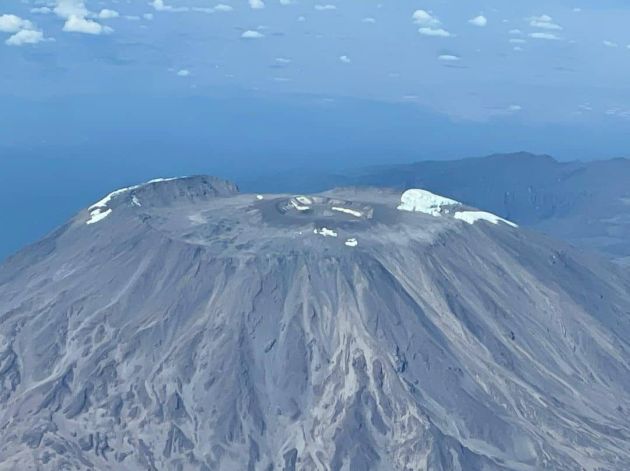Rescue Kilimanjaro Project
Fundraising campaign by
Emmanuel Samwel
-
US$0.00raised of $1,200,000.00 goal goal
Campaign Story
Rescue Kilimanjaro Project
Mt. Kilimanjaro is located 300 km south of the equator in Tanzania, on the border with Kenya. It is the highest mountain in Africa, a huge strata-volcano (ca. 90 by 60 km), composed of three single peaks, Kibo, Mawenzi and Shira that reach respectively an altitude of 5,895, 5,149 and 3,962 meters.
Kilimanjaro is also the world’s highest free standing mountain, looming 5,000 meters above an open undulating plain that averages around 1,000 meters above sea level. The morphology of the upper areas of Mt. Kilimanjaro is formed by glaciers which reached down to an altitude of 3000m above sea level (ASL) during the ice age (Downie & Wilkinson 1972, Hastenrath 1984)
Mt. Kilimanjaro is a critical water catchment for both Tanzania and Kenya. High rainfall and extensive forests give Mt. Kilimanjaro its high catchment value. The southern and the south-eastern forest slopes form the main upper catchments of the Pangani River, one of Tanzania’s largest rivers, which drains into the Indian Ocean near Tanga. Although the greater aridity of the northern slopes is reflected in a sparser network of valleys on this side, in their shallower cross-section and in the general absence of running water above 3000 m (Downie & Wilkinson 1972), the north-western slopes form the catchment of the Tsavo River, a tributary of the Galana River, one of Kenya’s major rivers. The Amboseli National Park in Kenya also depends on the hydrology of Mt. Kilimanjaro.
Deforestation is directly responsible for about 20 percent of greenhouse gas emissions. In addition to the carbon released when forests are burned, deforestation cripples the planet’s capacity to filter harmful CO2 from our air, which compounds the greenhouse effect, global warming and climate change.
Trees play an important role in Kilimanjaro’s ecosystem by providing moisture through transpiration.
Deforestation, in addition to climate change, could be a leading cause of glacial melt on Mount Kilimanjaro, according to a study from the University of Portsmouth released in September.
The causes of climate change in this unique ecosystem supporting various biodiversity are mainly human activities, specifically increases in anthropogenic greenhouse gas which is disrupting the climate system.
Most people now agree that human-induced climate change poses a serious threat to society and the Earth’s ecosystems.
Climate change has been experienced in different sectors; agriculture forester and biodiversity water resources and energy. People and their community are experiencing significant climate change impacts on food supply and security, water availability infrastructure and agriculture income. Human, Social, Natural, Physical and Economic assets of sustainable livelihood are threatened by the effects of climate change and the future predictions are much ominous.
The disappearance of “The Snows of Kilimanjaro” could seriously affect the local tourism industry, as well as local water supplies. People living at the base of Kilimanjaro depend on both glacial melt water, and precipitation in the rain forests to supply water to springs used for both drinking, as well as irrigation. It is unclear, however, if the majority of the water comes from the rainforests or glaciers. The fear being that if glaciers supply the larger portion, the disappearance of the ice fields will mean that the water supply will vanish too.
In 2013 it was estimated that, at the current rate of global warming, most of the ice on Kilimanjaro will disappear by 2040 and "it is highly unlikely that any ice body will remain after 2060.
The tree planting project in the parks and districts surrounding Mount Kilimanjaro is a five-year project that aims to plant five million trees (5 million trees) that will be accompanied by education on environmental conservation and tree planting. The project will also establish permanent tree nurseries in Longido, Siha, Hai, Moshi Dc and Rombo districts that will be distributing trees in project areas to ensure reliable access to tree seedlings over the next 10 years.
As well as planting trees in the conservation areas and villages surrounding Kilimanjaro's National Park, the project will focus on planting trees in water sources and river banks to save water which is the fastest lost resource in the world due to climate change.
The project has been established by the Foundation for Trees Tanzania (FTT) in partnership with The Dreams of Kilimanjaro an Eco Tour and Travel Company based in Moshi, Kilimanjaro-Tanzania.
In this project we will provide an opportunity to volunteer in conservation and reforestation activities in all areas of the project and we call on all who wish to volunteer in various areas to facilitate this project to contact us.
NOTE: We are organizing a special Kilimanjaro climbing aims in raising funds for this project as from March 2022 in partnership with The Dreams of Kilimanjaro, for every booking 1000 trees will be planted and you will participate in planting to make your climb iconic.
“Together we can save the snow cape at the top of Kilimanjaro, Plant Trees rescue Kilimanjaro”
Organizer
- Emmanuel Samwel
- Campaign Owner
No updates for this campaign just yet



